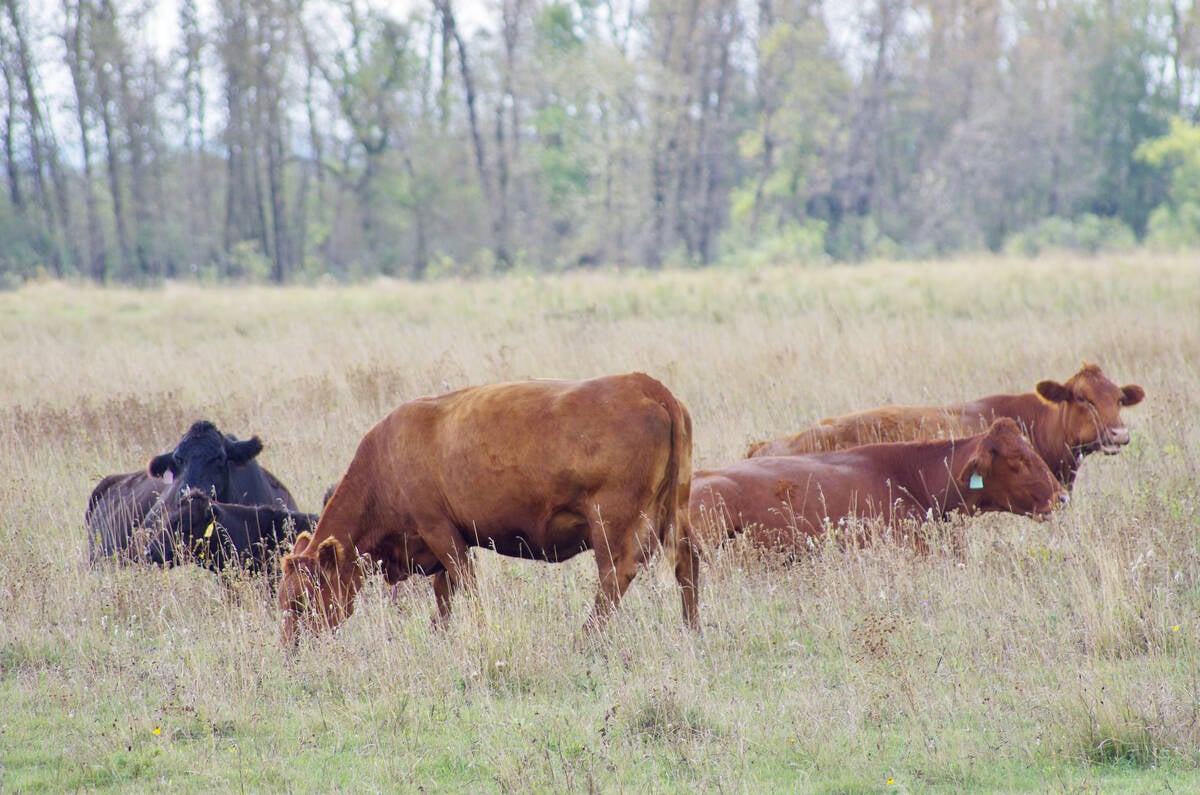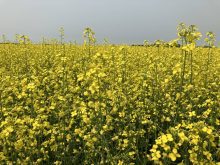Canadian farm income, no matter how it’s measured, was up a lot in 2020, data released Wednesday by Statistics Canada show.
Canadian net farm income of $18.1 billion is up $4.8 billion from 2019 — a 36.5 per cent increase.
Another measure — realized net farm income (RNFI) — saw farmers take in $9.9 billion, up 84.2 per cent from 2019.
However, StatsCan said, when income from cannabis is excluded, RNFI was up almost 72 per cent, which is still significant.
Higher farm income is good news for the agriculture industry, Bill Campbell, president of Manitoba’s Keystone Agricultural Producers (KAP), and JP Gervais, Farm Credit Canada’s chief agricultural economist, said in separate interviews Thursday.
Read Also

U.S. livestock: Chicago cattle futures climb on post-Thanksgiving trade
Chicago | Reuters – Chicago Mercantile Exchange’s live and feeder cattle futures ticked up on Friday in a day of…
Why it matters: Flush farmers have a reputation for reinvesting in their operations, which has a positive impact on the economy.
Net farm income is defined as gross revenue minus operating expenses. That’s the measure Gervais prefers.
“That’s what you have left at the end of the day to reinvest in your business,” he said.
RNFI is the difference between a farmer’s cash receipts and operating expenses, minus depreciation, plus income in kind. It’s a more nuanced measure.
“Rising crop receipts fuelled by strong export demand, combined with lower machinery fuel and fertilizer prices, pushed realized net income higher,” StatsCan said.
Saskatchewan accounted for over three-fifths of the national increase, while realized net income declined in Newfoundland and Labrador, Nova Scotia, New Brunswick and British Columbia, the federal agency said.
“The structure of agriculture production in these four provinces precluded them from fully benefiting from the robust export demand for grains, oilseeds and specialty crops and from lower machinery, fuel and fertilizer prices.”
The same factors that boosted RNFI accounted for higher net farm income, Gervais said.
While Canadian farmers’ expenses of $54.03 billion were up just 1.27 per cent in 2020, cash receipts of $72.2 billion jumped 8.3 per cent, StatsCan reported.
Last year saw the biggest jump in farm cash receipts, which is revenue from crop, livestock and government programs, since 2012.
Saskatchewan posted the largest increase, up 17.5 per cent.
Canadian crop revenue was up 14.8 per cent to $42.4 billion, following a 4.2 per cent increase in 2019.
Higher canola, lentil and cannabis receipts more than offset lower fruit and vegetable sales. Excluding cannabis, crop receipts would have increased 11.7 per cent — the largest gain since 2012.
“Higher export demand for most Canadian grains and oilseeds boosted receipts,” StatsCan said. “Exports of crops also benefited from greater rail capacity to ship these commodities, as demand weakened for petroleum products as a result of the COVID-19 pandemic.”
Crop receipts were bolstered by favourable growing and harvest conditions. This, along with robust demand, allowed more of the 2020 harvest to be recorded as sales in the same calendar year.
“Canola receipts were up 19 per cent, the largest percentage increase since a 38.2 per cent jump in 2011,” StatsCan said. “A 14.8 per cent rise in marketings was driven by exports, despite the ongoing trade dispute with China.
“As world oilseed demand strengthened in the latter part of the year, exports to China increased, while exports to the European Union almost doubled in 2020. Increased domestic crush also boosted canola sales. Year-end farm stocks were at their lowest level since the end of 2012.”
Farm cash receipts for wheat, excluding durum, increased 10.8 per cent as marketings rose 11.8 per cent.
Canadian feed grain exports to China increased to meet demand from its growing hog herd as that country boycotted its traditional supplier, Australia.
“Cannabis receipts rose 65 per cent in 2020 as the introduction of edibles, cannabis-based drinks and topicals in late 2019 and early 2020, combined with more retail outlets in some provinces, contributed to an increased demand for legal dried cannabis,” StatsCan said.
Last year wasn’t as good for Canadian livestock farmers.
Receipts declined 1.1 per cent to $26.3 billion as the pandemic disrupted meat packers, StatsCan said.
Hog receipts rose one per cent despite a 4.4 per cent drop in prices thanks to strong export demand.
The supply-managed sector posted a 1.7 per cent gain in receipts.
Lower interest costs helped keep 2020 expenses in check. “Debt has gone up in 2020, but because of lower interest rates, interest payments on that debt actually came down $100 million,” Gervais said.
Higher land prices won’t necessarily follow, he added. On average Canadian land prices have been rising for some time, including between 2015 and 2018 when net farm income declined.
“To understand where we’re going we need to understand where we’re coming from,” he said. “If you look at the share of income allocated to land payments we’re almost at the top of what historically it has been so there’s not as much room for land values to go up as in the past.
“I still think there will be a strong demand for land, but despite the rise in income I think businesses will be more careful about the price they are paying…”
It’s wise for farmers to consider what could go wrong, Gervais said.
“It’s good to play offence and grow your business, but also keep an eye on that first line of defence, which is cash basically, your working capital for those unexpected things that you know will be there,” he said.
The jump in farm income surprised KAP’s Campbell.
“It indicates how agriculture can be part of the economic recovery in this province and this country,” he said. “We need governments to acknowledge that. One in eight jobs in the country relies on agriculture.”
While crop values were unusually high recently, most farmers had already sold so couldn’t take advantage of those spikes, Campbell said.
Meanwhile, expenses, including fuel and fertilizer, are higher in 2021, and there are no guarantees the strong demand for Canadian crops in global markets will continue, he said.
“To suggest everything is as positive as the 2020 report moving ahead I think would be naive.”
— Allan Dawson is a reporter for the Manitoba Co-operator at Miami, Man.















